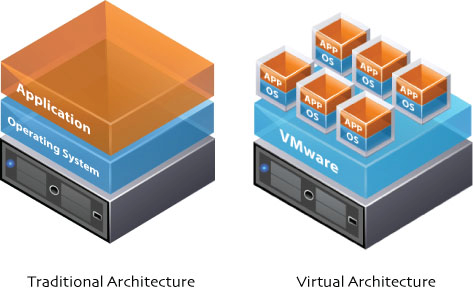
Virtualization broadly describes the separation of a resource or request for a service from the underlying physical delivery of that service. With virtual memory, for example, computer software gains access to more memory than is physically installed, via the background swapping of data to disk storage. Similarly, virtualization techniques can be applied to other IT infrastructure layers – including networks, storage, laptop or server hardware, operating systems and application
Using virtual infrastructure solutions such as those from VMware, we can assist you in addressing business challenges that include..
Eliminating ‘server sprawl’ via deployment of systems as virtual machines (VMs) that can run safely and move transparently across shared hardware, and increase server utilization rates from 5-15% to 60-80%.
Rapidly provisioning test and development servers by reusing pre-configured systems, enhancing developer collaboration and standardizing development environments.
Securing unmanaged PCs, work- stations and laptops without compromising end user autonomy by layering a security policy in software around desktop virtual machines.
Reducing the cost and complexity of business continuity (high availability and disaster recovery solutions) by encapsulating entire systems into single files that can be replicated and restored on any target server, thus minimizing downtime.